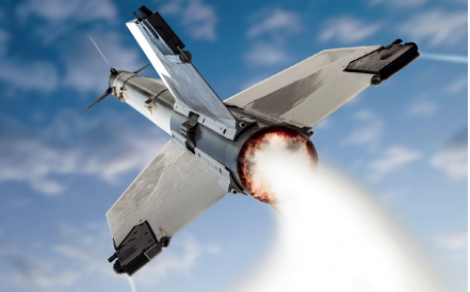COTS solution helps aerospace engineers rapidly optimise missile fin actuation system

Precise missile fin control can be the difference between hitting or missing the target. Fin actuation depends on a motion solution with reliable, high dynamic control, in a power-dense package. A customisable off-the-shelf (COTS) strategy can help achieve this outcome, minimising development time while meeting the essential operational criteria.
To achieve precision within metres of the missile’s expected impact point, precise fin control is fundamental. While the guidance system controls the trajectory, the performance of the motion solution, comprising the motor and feedback control, is crucial to achieve accurate and responsive missile fin position. The capability to actuate fins to the precise angle, rapidly reacting to continual feedback, is essential to achieve target precision.
Missile fin actuation demands a motion control system that can generate sufficient torque to move the position against aerodynamic forces, including velocity up to several times the speed of sound. However, mass and physical volume are critical constraints, both in terms of the aircraft’s overall payload when considering air-launched missiles, as well as the flight performance characteristics of the missile itself
High dynamic control
Brushless DC motors, also known as BLDC, are the preferred design, and a primary reason is their inherent power density. The absence of brushes can be combined with a slotless design that enables greater concentration of windings, boosting torque for the form factor. Increasing to four motor poles, rather than two, also maintains the same low mass and dimensions, but optimises torque. As a result, motor designs like the Portescap 30ECT Ultra EC™ can increase power output of the system by 20% for the given envelope. The 30ECT90 can generate up to 225mNm maximum continuous torque, as well as the peak torque required for high dynamic operation; it can also sustain 2 seconds peak torque creating 2.4Nm.
High dynamic performance is essential to enable virtual real time fin control to maintain precise trajectory from situational feedback. Contributing to rapid acceleration, low inertia is achieved through the slotless design thanks to its lighter rotor, improving the dynamic response. A slotless motor also reduces cogging torque, providing the smooth motion delivery essential to optimise control. The BLDC motor’s electronic commutation is also vital to this process, and the 30ECT Ultra EC motors integrate Hall sensors to provide rotor position feedback, as well as motor control including speed and torque.
Reliability is crucial
Considering the imperative for precision, ensuring fin actuation reliability is equally critical. Highly robust motor construction is essential, providing resistance to shock and vibration. Constructed from stainless steel, the 30ECT motors feature laser welded front flanges for additional durability. The motors can also operate across a wide temperature range, from - 55°C to 85°C. The motor design optimises thermal behaviour in repetitive cycles with high peak load, typical to the requirement for a fin’s frequent positional changes.
While the BLDC’s characteristics minimise losses in friction while improving thermal regulation, the slotless attributes minimise eddy currents that also contribute to heat generation. Reducing eddy currents also minimises electronic noise, where ensuring electromagnetic compatibility, alongside avionics and electronics devices, is imperative. Moreover, the slotless design decreases the prospect of concentrated magnetic flux densities that can generate noise interference.
-
PPMA 2025
23 September, 2025, 9:30 - 25 September, 2025, 16:00
NEC, Birmingham UK -
Advanced Engineering Show 2025
29 October, 2025, 9:00 - 30 October, 2025, 16:00
NEC, Birmingham UK










